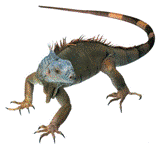Papers in the Biological Sciences

Papers in Herpetology
Document Type
Article
Date of this Version
9-1979
Citation
Prairie Naturalist (September 1979) 11(3): 65-74.
Abstract
Introduction: The distribution and natural history of amphibians and reptiles have been little studied in the northern states of the great plains. Relative to other vertebrate groups, the herpetofauna of grasslands is depauperate particularly at higher latitudes where temperature becomes a limiting factor to poikilotherms. Nevertheless, certain species of amphibians and reptiles are common in specific habitats and thus form a conspicuous component of the prairie fauna. The purposes of the present study were to document the distributions of herpetiles in a specified region of western Nebraska and to describe general aspects of their natural history. We hope such information will stimulate additiona} work as well as provide a baseline reference for future studies on the herpetofauna of the northern great plains. Previous work on herpetiles in western Nebraska are either in need of updating (e.g. Hudson, 1942) or are anecdotal or not comprehensive (Heyl and Smith, 1957; Gehlbach and Collette, 1959; Iverson, 1975; Lynch, 1978).
Summary: The herpetofauna of the seven county study area in western Nebraska may be characterized in general by a preponderance of organisms exhibiting both wide geographical and wide ecological distributions and tolerances. Species exhibiting little microhabitat specificity and which are found widely throughout the region include the tiger salamander, spadefoot toad, rocky mountain toad, striped chorus frog, lesser earless lizard, fence lizard, racerunner, common racer, bullsnake, red-sided garter snake, plains garter snake, snapping turtle and painted turtle. Those ecologically restricted species that enter the area include the plains leopard frog, common water snake, black-headed snake, yellow mud turtle, Blanding's turtle, and spiny soft-shelled turtle.


Comments
Copyright 1979, North Dakota Natural Science Society. Used by permission.